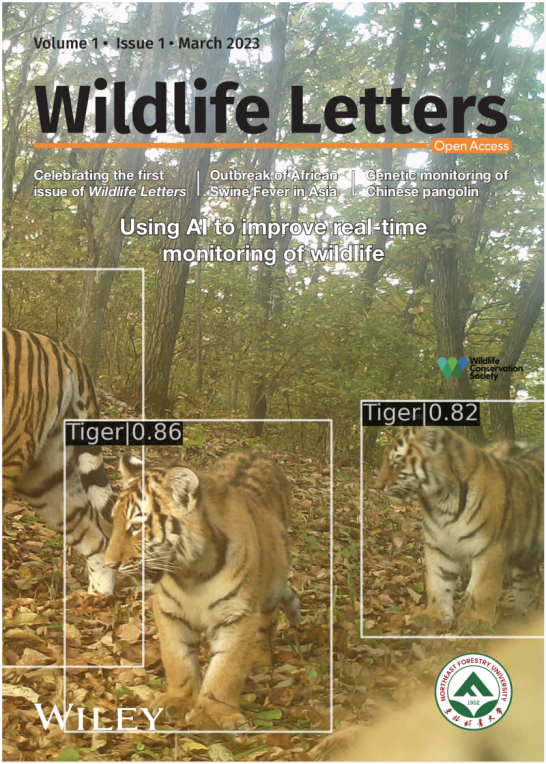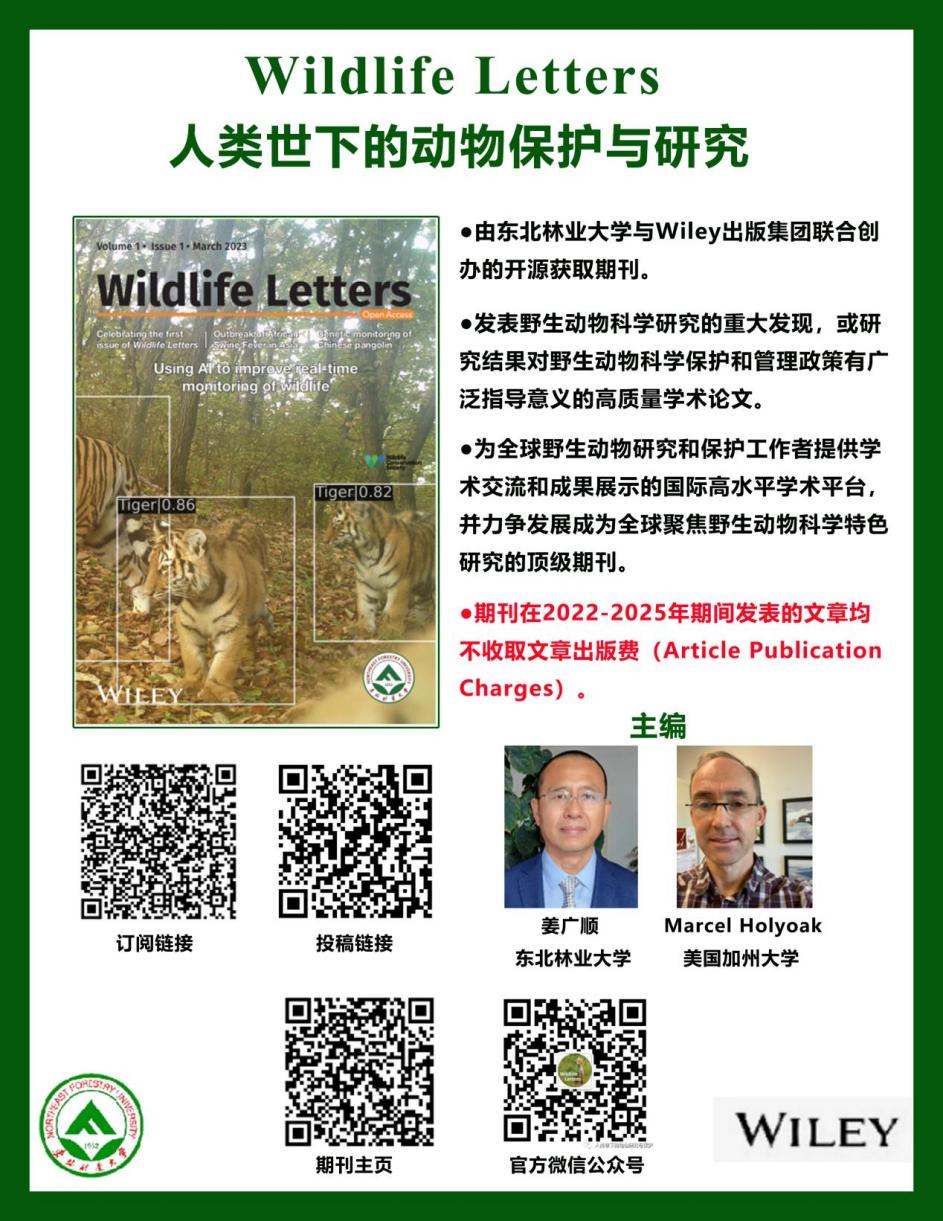The first issue of the new international journal Wildlife Letters went online in May 2023.
Wildlife Letters, officially launched in October 2022, is supervised by the Ministry of Education and jointly published by NEFU and Wiley, with Professor Marcel Holyoak from the University of California and Professor Jiang Guangshun from NEFU as editors-in-chief. The editorial board consists of more than forty internationally renowned experts and scholars from China, the United States, the United Kingdom, Australia, Spain and other countries.
The journal focuses on the publication of innovative theoretical, practical, methodological and technical findings in wildlife conservation and management research that have a wide international impact, as well as in-depth exploration of mechanisms for sustainable wildlife survival and development, scientific management, and policy development. It provides solutions or recommendations for scientific challenges to global or regional biodiversity conservation.

The first issue contains five articles focusing on important wildlife diseases, endangered animal monitoring, vertebrate evolutionary mechanisms and interdisciplinary wildlife identification and monitoring techniques.
The editors-in-chief co-wrote the journal’s inaugural message, “Editorial: Welcome to Wildlife Letters”, which introduced the journal’s background, founding aims, and vision. The aim of the journal is to provide an international high-level academic platform for the global wildlife research and conservation community to exchange ideas and showcase their achievements, and to develop the journal into the world’s top journal focusing on distinctive research in wildlife science.
In the inaugural issue of the journal, Principal Investigator Matthew Scott Luskin, from the Ecological Cascade Laboratory team in the School of Biological Sciences and the Centre for Biodiversity and Conservation Science at the University of Queensland, published an original research paper describing the mass mortality of native Asian pigs caused by African swine fever and calling for rapid and appropriate research into this unique natural event. Assistant Professor Mukesh Thakur, Senior Research Fellow from the Edelweiss Institute of Wildlife Sciences, Edelweiss University, India, and the Centre for DNA Taxonomy, Zoological Survey of India, published an original research paper estimating the population genetic parameters and historical dynamics of the Chinese pangolin through non-damaging genetic monitoring in the Darjeeling region of West Bengal, India, and found that the population size of the Chinese pangolin had started to significantly decline 200 years ago. The paper also provides a benchmark for the genetic assessment of Chinese pangolin populations, which can be used for genetic monitoring of Chinese pangolin populations and identification of the geographical origin of illegal products. Professor Yang Shilong’s team and Associate Professor Lu Xiancui from the NEFU College of Wildlife and Protected Areas published a review paper discussing the relationship between the biophysical properties of vertebrate TRPM8 cold activation and environmental temperature adaptation through the adaptive evolution of TRPM8 cold activation in wild vertebrates. Professor Qu Zhilin’s team from the School of Science, NEFU, published an original research paper introducing its development of the AF-TigerNet model, which enriches the types of wildlife detectors as an accurate, fast and practical detector for the Siberian tiger.
